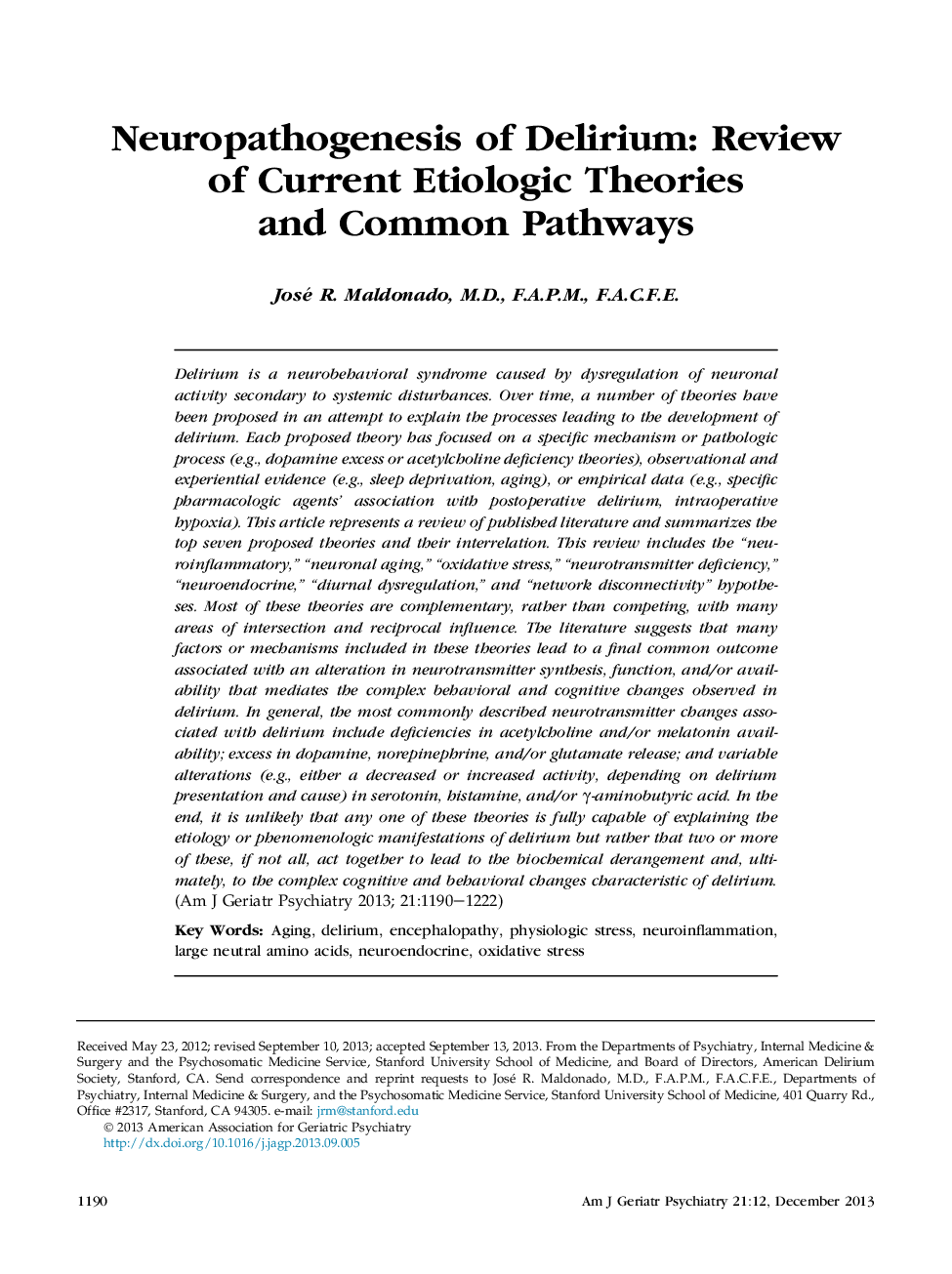| کد مقاله | کد نشریه | سال انتشار | مقاله انگلیسی | نسخه تمام متن |
|---|---|---|---|---|
| 6003869 | 1579359 | 2013 | 33 صفحه PDF | دانلود رایگان |
عنوان انگلیسی مقاله ISI
Neuropathogenesis of Delirium: Review of Current Etiologic Theories and Common Pathways
دانلود مقاله + سفارش ترجمه
دانلود مقاله ISI انگلیسی
رایگان برای ایرانیان
کلمات کلیدی
موضوعات مرتبط
علوم پزشکی و سلامت
پزشکی و دندانپزشکی
مغز و اعصاب بالینی
پیش نمایش صفحه اول مقاله

چکیده انگلیسی
Delirium is a neurobehavioral syndrome caused by dysregulation of neuronal activity secondary to systemic disturbances. Over time, a number of theories have been proposed in an attempt to explain the processes leading to the development of delirium. Each proposed theory has focused on a specific mechanism or pathologic process (e.g., dopamine excess or acetylcholine deficiency theories), observational and experiential evidence (e.g., sleep deprivation, aging), or empirical data (e.g., specific pharmacologic agents' association with postoperative delirium, intraoperative hypoxia). This article represents a review of published literature and summarizes the top seven proposed theories and their interrelation. This review includes the “neuroinflammatory,” “neuronal aging,” “oxidative stress,” “neurotransmitter deficiency,” “neuroendocrine,” “diurnal dysregulation,” and “network disconnectivity” hypotheses. Most of these theories are complementary, rather than competing, with many areas of intersection and reciprocal influence. The literature suggests that many factors or mechanisms included in these theories lead to a final common outcome associated with an alteration in neurotransmitter synthesis, function, and/or availability that mediates the complex behavioral and cognitive changes observed in delirium. In general, the most commonly described neurotransmitter changes associated with delirium include deficiencies in acetylcholine and/or melatonin availability; excess in dopamine, norepinephrine, and/or glutamate release; and variable alterations (e.g., either a decreased or increased activity, depending on delirium presentation and cause) in serotonin, histamine, and/or γ-aminobutyric acid. In the end, it is unlikely that any one of these theories is fully capable of explaining the etiology or phenomenologic manifestations of delirium but rather that two or more of these, if not all, act together to lead to the biochemical derangement and, ultimately, to the complex cognitive and behavioral changes characteristic of delirium.
ناشر
Database: Elsevier - ScienceDirect (ساینس دایرکت)
Journal: The American Journal of Geriatric Psychiatry - Volume 21, Issue 12, December 2013, Pages 1190-1222
Journal: The American Journal of Geriatric Psychiatry - Volume 21, Issue 12, December 2013, Pages 1190-1222
نویسندگان
José R. M.D., F.A.P.M., F.A.C.F.E.,